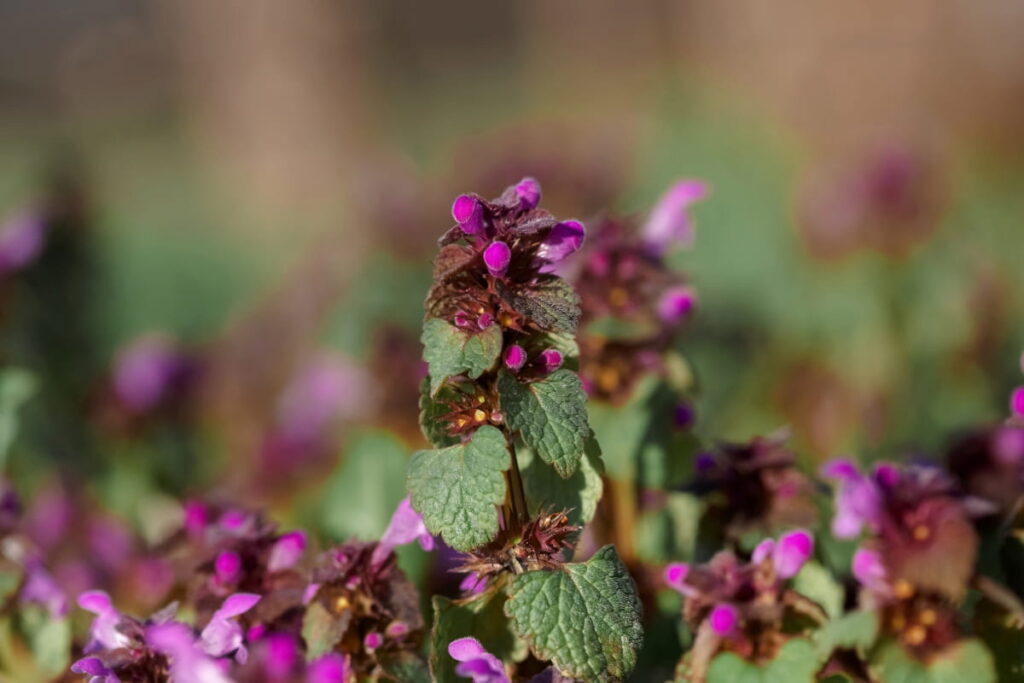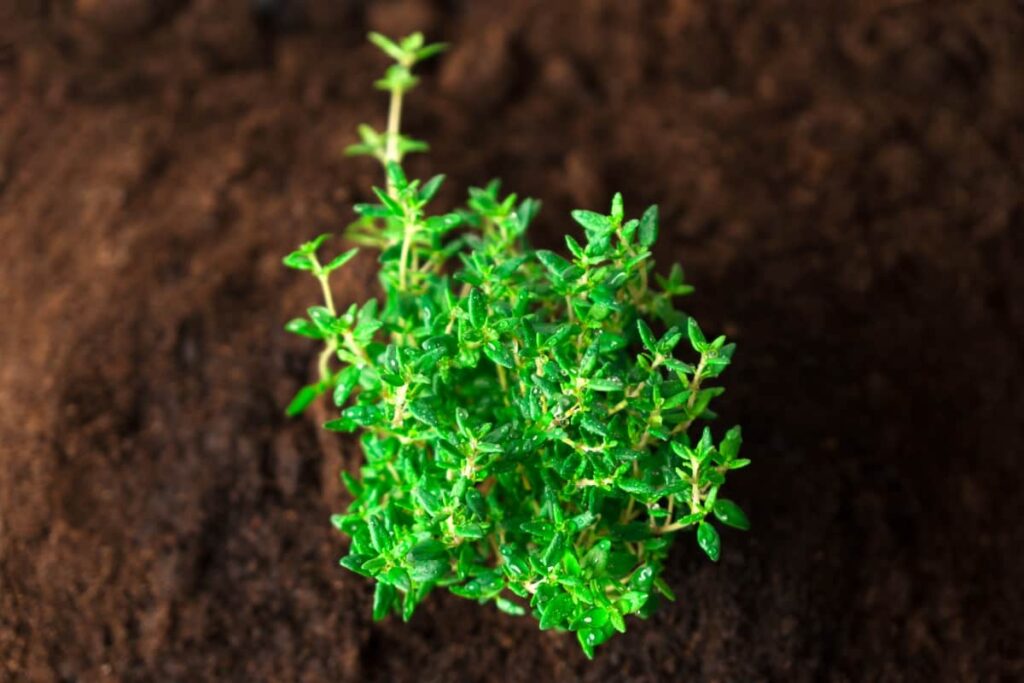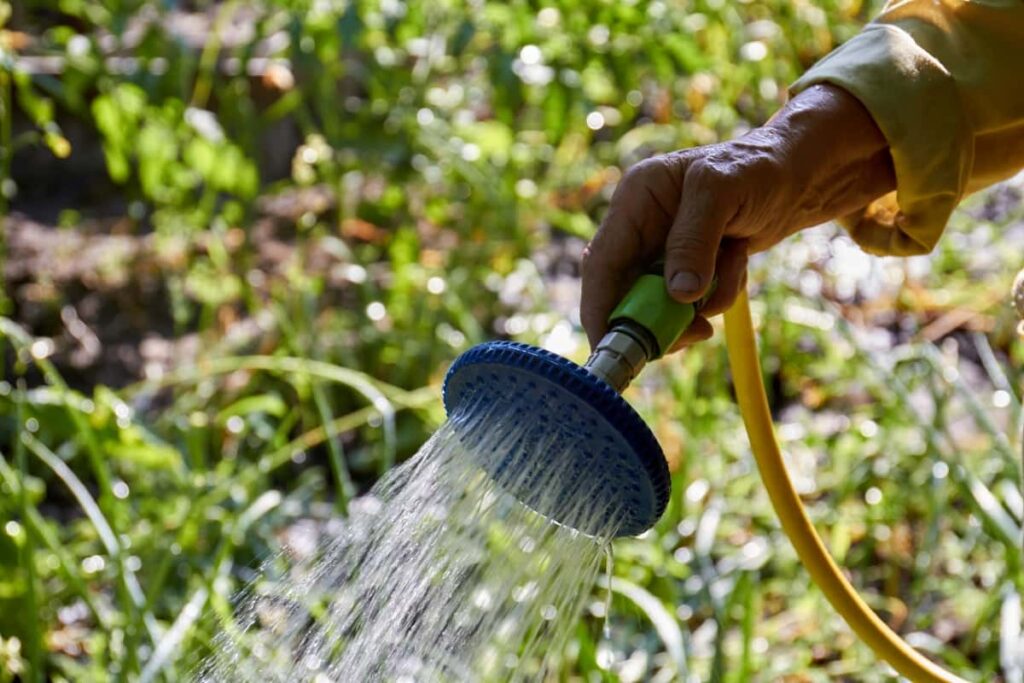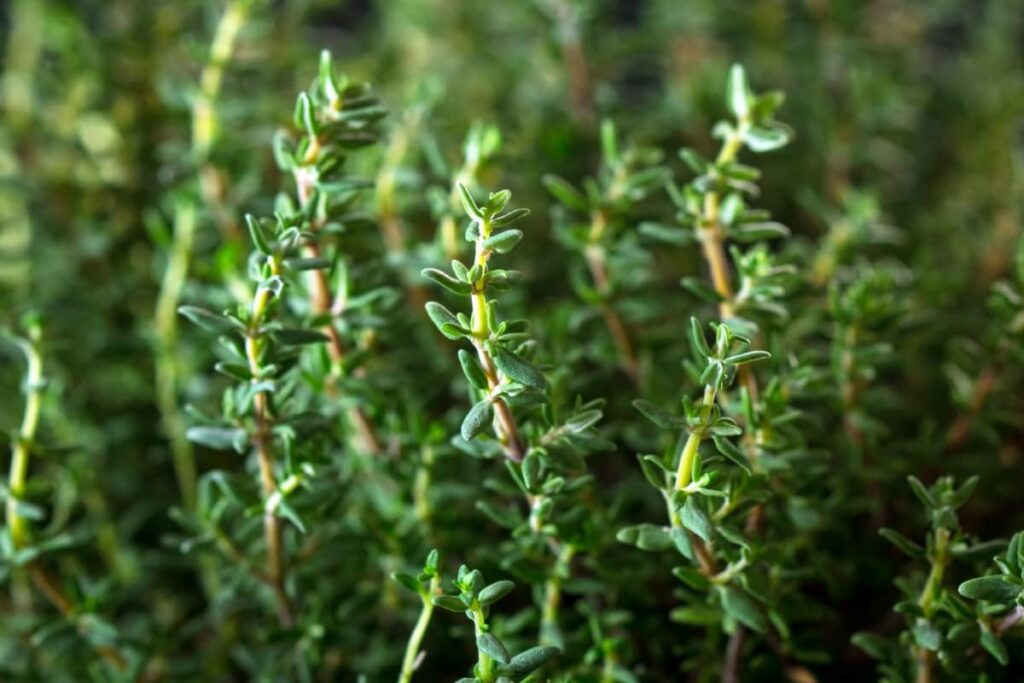Red Creeping Thyme, also known as Red Carpet Thyme, is a perennial plant that is popular for its vibrant red foliage and delicate pink-purple flowers. With its tiny flowers and low-growing habit, it’s a charming addition to any landscape. Belonging to the mint family, Lamiaceae, this perennial beauty adds a pop of color and charm to any garden setting.
Benefits in the Garden
The key benefit of growing Red Creeping Thyme is its ability to attract pollinators. In addition to its ecological benefits, Red Creeping Thyme is also drought-tolerant once established, making it a good choice for low-maintenance landscaping.

Growing Red Creeping Thyme
Site Selection and Soil Preparation
Choosing the Right Location
When selecting a site for your Red Creeping Thyme, aim for a location with full sunlight. This herb thrives in bright, sunny spots that receive at least 6 hours of direct light per day. Red Creeping Thyme prefers well-draining soil to prevent waterlogging and root rot.
Soil Types and Amendments
Sandy or loamy soil types work best, but if you grow in heavy clay soil, amending it with organic matter like compost can improve drainage. Ensure the soil is loose and fertile by incorporating some organic amendments such as aged manure or compost. These additions help provide essential nutrients for healthy growth. Avoid areas with excessive moisture retention or where water tends to pool after rainfall. Standing water can lead to root diseases and hinder the plant’s overall health and vigor.
Propagation Methods
Propagating from Cuttings
Propagation of Red Creeping Thyme can be done through cuttings or division of established plants. To propagate Red Creeping Thyme from cuttings, select healthy stems and snip them just below a leaf node. Remove the lower leaves to expose a portion of the stem. Plant the thyme cutting in moist soil and keep it well-watered until roots develop.
Division of Established Plants
For division, carefully dig up an established plant and separate the root ball into sections. Each section should have both roots and foliage intact. Replant these divisions in prepared soil, ensuring they receive adequate water and sunlight.
Planting Red Creeping Thyme
Best Time to Plant
The best time to plant Red Creeping Thyme is in the spring after the last frost has passed. This allows the plant to establish itself during the growing season. Ensure that the soil temperature levels have warmed up sufficiently before planting. Cold soil can hinder root development and growth. Select a plant with well-draining soil and ample sunlight for optimal results.
In case you missed it: Thyme Farming, Cultivation Practices, Planting Methods

Planting Techniques and Spacing
Start by preparing the soil thoroughly, ensuring it is well-drained and nutrient-rich. Dig holes that are larger than the root ball of the plant to allow room for growth. Eliminate the plant carefully from its container and place it in the hole at ground level. Space each plant about 6-12 inches apart to give them ample space to spread and thrive. This will also help prevent overcrowding and competition for resources.
After planting, water your Red Creeping Thyme to help settle the soil around the roots. Keep an eye on moisture levels in the following weeks, making sure not to overwater.
Watering and Nutritional Needs
Watering Requirements
Red Creeping Thyme plant prefers well-drained soil. Overwatering the Red Creeping Thyme plant can affect root rot, so the soil dries out between watering sessions. During the growing season, which is spring through early fall, aim to water consistently but avoid waterlogging the roots. A good rule of thumb is about an inch of water per week, either from rainfall or manual irrigation.
In case you missed it: Rosemary Farming Business Plan: A Step-by-Step Guide to Growing and Selling Profitable Herbs

Fertilization and Soil Health
Red Creeping Thyme doesn’t require much feeding. A balanced fertilizer application in early spring must be sufficient for the entire growing season. Avoid using high-nitrogen fertilizers as they may encourage excessive foliage at the expense of flowers. Maintaining healthy soil is also crucial for optimal growth.
Sunlight and Temperature Requirements
Ideal Sunlight Conditions
This vibrant herb thrives in full sun, so make sure to plant it where it can soak up those rays all day long. Ideal sunlight conditions mean at least 6-8 hours of direct sunlight daily. By providing your Red Creeping Thyme with optimal sunlight and managing temperature fluctuations effectively, you’ll set the stage for a flourishing garden filled with beautiful pink blooms.
In case you missed it: Garlic Cultivation Information Guide

Temperature Tolerances
As for temperature tolerances, Red Creeping Thyme is hardy and can grow at different temperature levels. It prefers moderate temperatures between 15-27°C. However, this tough little plant can also tolerate some heat and cold extremes once established. During hot summer days, ensure the soil is well-drained to prevent waterlogged roots that could harm the plant. In colder climate conditions, a mulch layer around the base can help insulate the roots during winter months.
Pruning and Maintenance
Pruning Techniques
Pruning is important to maintaining plant health and appearance. One effective technique is to trim back the plant after each flowering period to encourage new growth and prevent legginess. Using sharp scissors or shears, cut above a set of leaves to promote bushier growth.
Seasonal Maintenance Tips
Seasonal maintenance tips vary depending on the time of year. In spring, remove any dead or damaged foliage and lightly prune for shape. During the growing season, regularly check for signs of overcrowding or invasive spread and trim as needed. Before winter sets in, consider giving your Red Creeping Thyme a final light pruning to tidy up before dormancy.
Pest and Disease Management
Common Pests and Organic Controls
Some common pests in Red Creeping Thyme include spider mites, aphids, and whiteflies. One organic control method is introducing beneficial insects like ladybugs or lacewings to help keep pest populations in check naturally. You can also use neem oil as a gentle approach to controlling pests without harming the environment. Regularly inspecting your Red Creeping Thyme plants for any signs of infestation or disease is crucial in maintaining their health and vitality. By staying vigilant and taking prompt action when needed, you can keep your red-creeping thyme thriving all season long.
Preventing and Managing Diseases
In terms of diseases, powdery mildew and root rot are among the most common issues that can affect Red Creeping Thyme. To prevent these problems, make sure your plants have good air circulation and avoid overwatering. Regularly checking your thyme plants for any signs of disease and practicing good garden hygiene are key steps in preventing and managing diseases in your Red Creeping Thyme garden.
Landscaping with Red Creeping Thyme
Design Ideas and Uses
Landscaping with Red Creeping Thyme offers a versatile option for adding texture to your garden. This low-growing herb is perfect for creating beautiful borders along pathways or rock gardens. Its vibrant red flowers can complement various landscape designs, providing a pop of color.
Companion Plants and Combinations
Red Creeping Thyme pairs well with other low-maintenance herbs like lavender or rosemary. These combinations enhance the visual appeal of your garden and also create a fragrant and inviting atmosphere. Consider planting Red Creeping Thyme in between stepping stones or in crevices of walls for a whimsical touch. Its spreading nature allows it to fill in spaces between pavers, softening hardscapes while adding visual interest.
Troubleshooting Common Issues
Yellowing Leaves
This could be due to overwatering, lack of sunlight, or nutrient deficiencies. To troubleshoot this issue, check the soil moisture levels and adjust watering accordingly. Ensure that your Red Creeping Thyme plants receive adequate sunlight each day for healthy growth.
Thinning or Patchy Growth
Thinning or patchy growth in your Red Creeping Thyme can be a common issue caused by overcrowding or poor soil quality. Consider dividing and transplanting crowded areas to allow better air circulation and nutrient uptake. Evaluate the soil condition and amend it with organic matter if necessary to improve plant health. By addressing these common issues promptly, you can help your Red Creeping Thyme thrive and maintain its vibrant appearance in your garden landscape.
Conclusion
Red Creeping Thyme is a vibrant herb that will add beauty to your indoor garden and also bring a touch of enchanting aroma and versatility to your outdoor space. It is a natural ground cover that helps suppress weeds, making it a good choice for landscaping.
- Profitable Village Farming Business Ideas in 2024
- High-Yield Aquaculture: Fast-Growing Fish for Farming
- Effective Fish Pond Construction Techniques for Beginners
- Irrigation and Water Management in Pineapple Farming
- Blossom to Harvest: Mastering Flowering and Pollination in Papaya Farming
- Pig Fattening Essentials: From Selection to Sale for Beginners
- Raising Wagyu Cattle: A Complete Guide for Premium Beef Production
- Soil Types and Their Water Holding Capacity
- Optimizing Irrigation Schedules for Coconut Groves for Enhanced Yield
